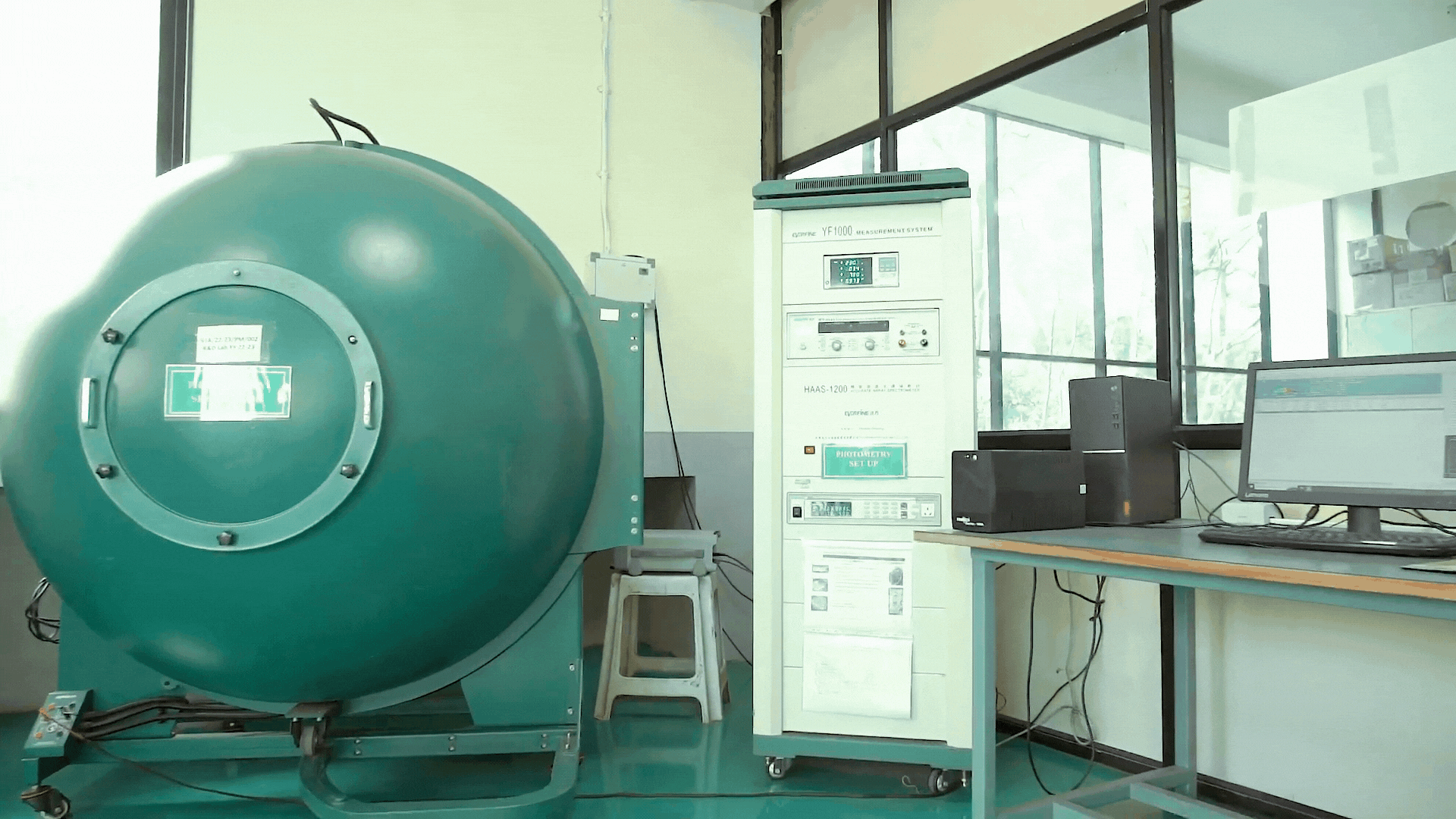Electrical Testing
At VOEPL Lab, we offer comprehensive Electrical Testing services to ensure product quality, safety, and compliance with national and international standards. Certified by NABL and equipped with advanced testing tools, we specialize in performance evaluation, safety compliance, durability testing and EMC testing analysis. Our rigorous processes validate electrical components and systems, helping manufacturers deliver reliable, efficient, and compliant products to the market.
Photometry Test
The scope of Accreditation to perform the repetitive photometric measurements like CCT, colour chromaticity, CRI, Luminous flux, Power etc for light sources (electric lamps) and luminaries in the laboratory, which are used for the purpose of illumination involving Spherephotometry.
Discipline / group | Materials or Products tested | Test | Standard | Clause |
|
ELECTRICAL- LAMPS, LUMINARIES & ACCESSORIES |
Self- Ballasted LED Lamps for General Lighting |
Resistance to flame and ignition |
IS 16102 (Part 1):2012 |
12 |
|
PHOTOMETRY- LIGHT SOURCES (ELECTRIC LAMP) |
Self- Ballasted LED Lamps for General Lighting |
Color Rendering Index (CRI) |
IS 16102 (Part 2):2017 |
10.2 |
|
PHOTOMETRY- LIGHT SOURCES (ELECTRIC LAMP) |
Self- Ballasted LED Lamps for General Lighting |
Corelated Color Temperature (CCT) |
IS 16102 (Part 2):2017 |
10.1 |
|
PHOTOMETRY- LIGHT SOURCES (ELECTRIC LAMP) |
Self- Ballasted LED Lamps for General Lighting |
Color chromaticity |
IS 16102 (Part 2):2017 |
10.1 |
|
PHOTOMETRY- LIGHT SOURCES (ELECTRIC LAMP) |
Self- Ballasted LED Lamps for General Lighting |
Luminous Efficacy |
IS 16102 (Part 2):2017 |
9.3 |
|
PHOTOMETRY- LIGHT SOURCES (ELECTRIC LAMP) |
Self- Ballasted LED Lamps for General Lighting |
Lamp Power |
IS 16102 (Part 2):2017 |
8.1 |
|
PHOTOMETRY- LIGHT SOURCES (ELECTRIC LAMP) |
Self- Ballasted LED Lamps for General Lighting |
Luminous Flux |
IS 16102 (Part 2):2017 |
9.1 |
|
PHOTOMETRY- LIGHT SOURCES (ELECTRIC LAMP) |
Self- Ballasted LED Lamps for General Lighting |
Power Factor |
IS 16102 (Part 2):2017 |
8.2 |
|
ELECTRICAL- LAMPS, LUMINARIES & ACCESSORIES |
Self- Ballasted LED Lamps for General Lighting |
Protection against accidental contact with live part |
IS 16102 (Part 1):2012 |
7 |
| High voltage and insulation resistance test | A dielectric voltage withstand test (also known as a hipot test) is done by applying a voltage higher than operating voltage to the device or installation under test. In this test, the electric insulation of a product or installation is put under a voltage stress much higher than its normal operating voltage. If the hipot test is done for type testing purposes, a much larger voltage may be applied. |
| ESD test | Electrostatic discharge (ESD) testing is performed to test the susceptibility of ICs and electronic devices to ESD. ESD tests are broadly divided into device- and system-level tests. These are go/no-go tests that simply determine whether equipment under test (EUT) is destroyed by ESD. |
| Surge test | A
surge test subjects the system to voltage spikes on top of the nominal
voltage input to the system. These spikes are representative of voltage
fluctuations that occur from causes such as large motor drives, nearby
lightning strikes, etc. High voltage deviations can cause a variety of issues when applied to a system not designed to handle them. Testing ensures that the end equipment will give the level of performance needed for your application. |
| Low voltage operation test | This test is used to check endurance of product when subjected to continuous low voltages |
| High voltage operation test | This test is used to check endurance of product when subjected to continuous high voltages |
| Normal voltage operation test | This test is used to check endurance of product when subjected to rated voltages |
| Switching test | This test is used to check endurance of product when subjected to continuous switching ON & OFF for product |
| Temperature rise test | Temperature rise refers to the temperature of each component in electronic and electrical equipment above the environment. When current pass through the component heat is generated. With the passage of time, the temperature of the conductor surface continues to rise until it is stable. The rated temperature rise of the component refers to the maximum allowable temperature rise of the |
| Line Regulation test | This test is electrical parameter measurement test. Device is subjected to various input voltages in steps , and accordingly the output electrical parameters are measured. |
| Cap rise temperature test | A lamp cap temperature rise test measures the surface temperature of a lamp cap when it's fitted to a standard test lampholder. The test is used to ensure that a lamp doesn't overheat during operation. |
